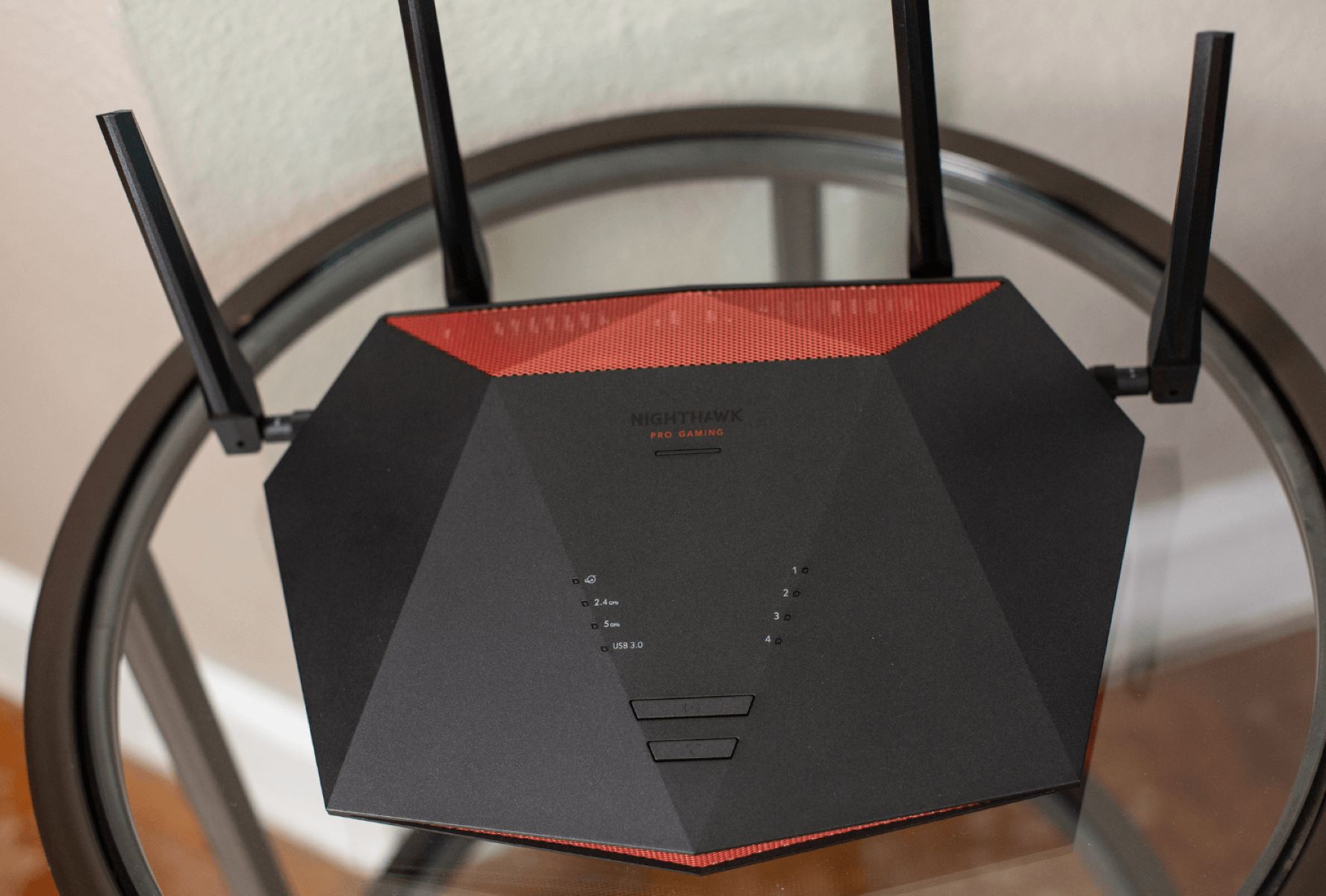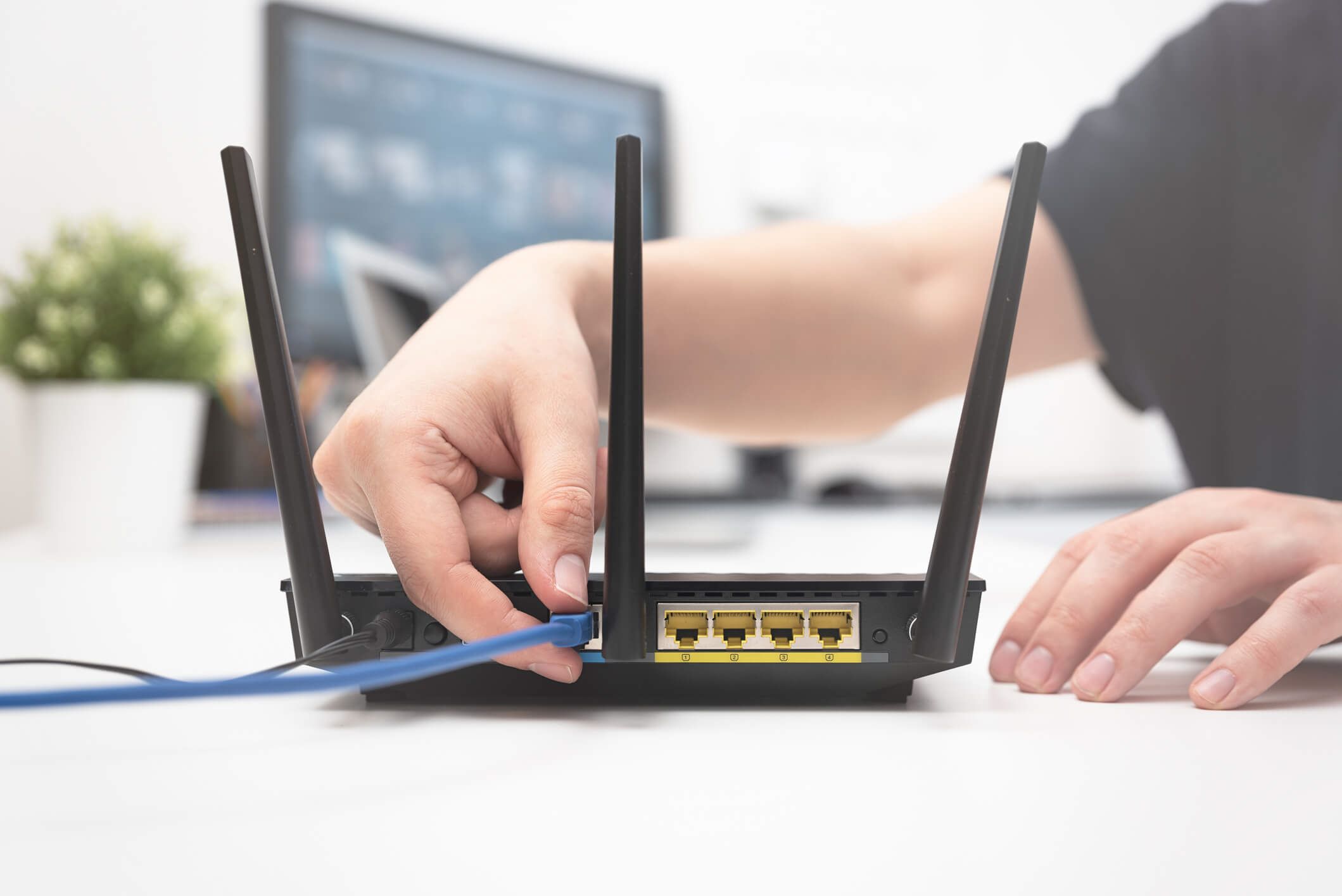Introduction
Routers play a crucial role in the transmission of data across computer networks. They act as gateways, directing traffic and ensuring that data packets reach their intended destinations. In the realm of Autonomous Systems (AS), which are individual networks under a single administrative domain, routers serve as the backbone for communication between ASs.
An AS is a collection of IP networks that are managed and controlled by a single entity, typically an Internet Service Provider (ISP) or a large organization. ASs are designed to operate independently and make routing decisions based on their internal policies. However, when it comes to transferring data between ASs, a specific protocol is needed to facilitate this communication.
The protocol that is responsible for exchanging routing information between routers representing the edges of different ASs is known as the Border Gateway Protocol (BGP). BGP is an external gateway protocol that allows routers in separate ASs to exchange information about the reachability of networks and determine the optimal paths for data transmission.
In this article, we will delve into the details of how BGP functions and why it is the preferred protocol for communication between edge routers in autonomous systems. We will explore the basics of BGP, its advantages, challenges, and its significance in interconnecting routers in different ASs.
We will examine the role of routers in autonomous systems and the need for a specific protocol to facilitate communication between ASs. Additionally, we will discuss the advantages of BGP over other routing protocols and the challenges it faces in facilitating efficient and secure data transmission.
By understanding the fundamental concepts of BGP and its impact on inter-AS communication, we can gain insights into the intricate workings of the internet infrastructure and the protocols that underpin global connectivity.
Definition of Autonomous Systems
An Autonomous System (AS) is a network that is managed and operated by a single entity, such as an Internet Service Provider (ISP) or a large organization. It is a collection of IP networks that are subject to a common routing policy and is identified by a unique Autonomous System Number (ASN).
ASs are designed to have control over their own routing decisions and internal policies, allowing them to operate independently from other ASs. Each AS is responsible for determining the best paths for data transmission within its network and exchanging routing information with other neighboring ASs.
In the global internet infrastructure, ASs play a crucial role in the exchange of data packets. When a packet needs to be transmitted from one network to another, it travels through various ASs along the way. Each AS determines the next hop for the packet based on its internal routing policies and the information it has learned about other networks’ reachabilities.
ASs are classified into two categories:
- Single-homed AS: This type of AS has a single connection to another AS. It typically represents small-scale organizations or regional ISPs.
- Multi-homed AS: A multi-homed AS has connections to multiple other ASs. These connections provide redundancy and enable load balancing between different ISPs. Large organizations and global ISPs often fall into this category.
ASs are connected to each other through routers, which serve as the gateways for data transmission between networks. These routers represent the edges of the ASs and are responsible for exchanging routing information with routers from other ASs.
The communication between edge routers of different ASs is crucial for the functioning of the internet. To facilitate this communication, a specific protocol is required – the Border Gateway Protocol (BGP). BGP enables routers in separate ASs to exchange routing information and determine the optimal paths for data transmission.
In the following sections, we will explore in depth the role of routers in ASs, the interconnection of routers in different ASs, and the specifics of the BGP protocol, which enables seamless communication between edge routers in autonomous systems.
Role of Routers in Autonomous Systems
Routers play a critical role in the functioning of autonomous systems (ASs). They are responsible for directing network traffic and ensuring that data packets are delivered to their intended destinations. In the context of ASs, routers connect different networks within the AS and handle the exchange of data with networks outside the AS.
One of the primary functions of routers in ASs is to implement the routing policies defined by the network administrators. These policies dictate how traffic should be routed within the AS and how it should be exchanged with other ASs. Routers use various routing protocols, including the Border Gateway Protocol (BGP), to communicate and exchange routing information with other routers.
Within an AS, routers are typically organized into a hierarchical structure. At the top level, there are usually core routers that handle the majority of the routing within the AS. These core routers are connected to distribution routers, which in turn connect to access routers. The access routers are responsible for connecting individual networks or devices within the AS.
Each router in the AS maintains a routing table that contains information about the routes to different networks within and outside the AS. This routing table is built using various routing protocols, such as Interior Gateway Protocols (IGPs) like OSPF or IS-IS, which are used for routing within the AS. The routers use this routing table to determine the best path for forwarding data packets.
When a router receives a data packet, it examines the packet’s destination IP address and consults its routing table to determine the next hop for the packet. The router then forwards the packet to the appropriate interface, directing it towards its intended destination.
Additionally, routers in ASs also perform other important functions, including traffic filtering, network address translation (NAT), and Quality of Service (QoS) management. These functions help optimize the performance and security of the network.
The role of routers in ASs goes beyond just forwarding data packets. They are responsible for maintaining the connectivity and stability of the network by actively exchanging routing information with other routers. This allows them to adapt to changes in network topology and ensure efficient delivery of data.
With the rapid growth of the internet and the increasing complexity of network infrastructures, routers in ASs continue to evolve and become more advanced. They are equipped with sophisticated features and capabilities to handle the growing demands of data transmission and ensure reliable communication between networks.
In the next section, we will explore how routers in different ASs are interconnected and the protocol used for data communication between these edge routers.
Interconnecting Routers in Different Autonomous Systems
In the vast and interconnected landscape of the internet, the need for communication between routers in different autonomous systems (ASs) arises when data needs to be transmitted between networks belonging to separate ASs. This interconnection of routers from different ASs allows for seamless data exchange and enables the internet to function as a unified global network.
To achieve this interconnectivity, a specific protocol is utilized – the Border Gateway Protocol (BGP). BGP is an external gateway protocol that facilitates the exchange of routing information between routers representing the edges of different ASs.
The interconnection between routers in different ASs occurs at specific network points called Internet Exchange Points (IXPs). These IXPs serve as physical locations where multiple ASs connect their networks and exchange traffic. By interconnecting at IXPs, ASs can establish direct peering relationships, enabling more efficient and direct data communication between their networks.
At these IXPs, routers from different ASs establish BGP sessions to exchange routing information. BGP operates using a path vector protocol, which means that it exchanges information about the networks it can reach along with additional attributes that help determine the best path to reach a specific network.
When a router in one AS wants to transmit data to a router in another AS, it first needs to determine the best path for the data. Through BGP, the router learns about the available routes to the destination network along with their associated attributes, such as path length, AS path, and routing policies. Using this information, the router can select the optimal path and forward the data accordingly.
The interconnection of routers in different ASs allows for efficient and scalable routing throughout the internet. BGP enables dynamic and adaptive routing, as routers can quickly respond to changes in network conditions, such as link failures or changes in routing policies.
Furthermore, BGP provides mechanisms for load balancing and traffic engineering. Routers can advertise multiple routes to the same destination network, allowing for the distribution of traffic across different paths. This helps to optimize the utilization of network resources and improve overall network performance.
It is worth noting that the interconnection of routers in different ASs via BGP is not limited to physical connections at IXPs. Virtual private network (VPN) connections over the internet also utilize BGP as the protocol for exchanging routing information and establishing secure communication between routers in separate ASs.
In summary, the interconnection of routers in different autonomous systems is facilitated by the Border Gateway Protocol (BGP). Through BGP, routers exchange routing information and determine the best paths for data transmission. This interconnectivity enables seamless communication between networks belonging to separate ASs and is essential for the functioning of the global internet.
Border Gateway Protocol (BGP)
The Border Gateway Protocol (BGP) is an essential routing protocol utilized in autonomous systems (ASs) to exchange routing information and facilitate communication between routers representing the edges of different ASs. As an external gateway protocol, BGP is responsible for exchanging reachability information of networks and determining the best paths for data transmission.
Unlike interior gateway protocols (IGPs) that focus on routing within a single AS, BGP is specifically designed for inter-AS routing. It allows routers to exchange information about the networks they can reach and learn about the paths, policies, and attributes associated with these networks.
BGP operates in a decentralized manner, with each router in an AS maintaining its own routing table. These routing tables contain information about the networks learned through BGP sessions with neighboring routers. The routers use this information to make informed decisions on how to forward data packets towards their destination networks.
One of the key features of BGP is its ability to maintain a full mesh of connections between routers in different ASs. This means that each router establishes a direct BGP session with every neighboring router. These sessions allow for the exchange of routing updates, including information about new network reachabilities or changes in existing paths.
When routers communicate via BGP, they send update messages containing information about the networks they can reach and the attributes associated with those networks. These attributes include factors such as the path length, the AS path taken to reach the network, and various policy-based attributes.
BGP uses these attributes to determine the best path for data transmission. Routers compare the attributes of different paths and select the path that meets the configured policies and provides optimal performance. This allows for intelligent routing decisions that consider factors beyond just reachability, such as network policies and path preferences.
Another important aspect of BGP is its support for multiple routing policy mechanisms. Network administrators can configure BGP to enforce specific policies, such as prioritizing certain paths, implementing traffic engineering, or filtering certain routes. This flexibility allows organizations to have granular control over their routing decisions and ensures the efficient and secure operation of their networks.
BGP is widely used in the internet infrastructure and provides the foundation for interconnecting autonomous systems globally. Its scalability, flexibility, and robustness make it a suitable protocol for managing the complex routing requirements of large-scale networks.
However, the deployment and configuration of BGP require careful consideration. It is essential to ensure proper security measures, such as authentication and access control lists, as well as regular monitoring and maintenance to guarantee optimal performance.
In the next section, we will explore how BGP functions as the protocol for data communication between edge routers in autonomous systems.
Basics of BGP
The Border Gateway Protocol (BGP) is a foundational routing protocol used in autonomous systems (ASs) to enable communication between routers representing the edges of different ASs. Understanding the basics of BGP is crucial for comprehending its role in inter-AS routing and the exchange of routing information.
At its core, BGP operates as a path vector protocol, meaning it exchanges information about network reachability along with associated attributes that help determine the best paths for data transmission. These attributes include factors such as path length, AS path information, and policies defined by the ASs.
BGP routers establish peering relationships with neighboring routers in different ASs. These routers exchange routing updates, known as BGP updates, through TCP/IP connections. BGP updates contain information about the networks that each router can reach, along with the attributes of these networks.
When a BGP router receives an update, it processes the information and updates its own routing table. Based on the attributes provided in the update, the router determines the best path to reach a specific network and selects it as the route choice for forwarding data.
Unlike interior gateway protocols (IGPs), such as OSPF or IS-IS, BGP does not rely on calculating the shortest path based on metrics like hop count. Instead, BGP takes into account various attributes to make more informed routing decisions. These attributes introduce flexibility and allow network administrators to enforce specific policies.
One significant attribute used in BGP is the AS path. It contains the sequence of ASs that the update has traversed to reach the receiving router. This information helps prevent routing loops and allows for policy enforcement. Routers can apply filters to control the routes they accept or propagate based on the AS path attributes.
BGP also supports route aggregation, where multiple individual routes are combined into a single advertisement. Route aggregation helps optimize the routing tables and reduces the size and complexity of the routing updates exchanged between routers.
Another important concept in BGP is the distinction between eBGP (external BGP) and iBGP (internal BGP). eBGP is used to exchange routing information between routers in different ASs, while iBGP is used for communication within the same AS. iBGP enables the propagation of routing information learned from eBGP sessions across the internal routers of an AS, ensuring consistent routing throughout the AS.
Lastly, BGP is equipped with mechanisms to handle route flaps and reduce the impact of frequent or unstable route changes in the network. BGP employs hold timers and route dampening techniques to stabilize and dampen the effects of route instability caused by rapid changes in network conditions.
Understanding the basics of BGP provides insight into how routers communicate, exchange information, and make routing decisions in inter-AS scenarios. In the next section, we will explore in detail how BGP serves as the protocol for data communication between edge routers in autonomous systems.
BGP as the Protocol for Data Communication Between Edge Routers
The Border Gateway Protocol (BGP) plays a crucial role as the protocol for data communication between edge routers in autonomous systems (ASs). BGP enables seamless and efficient exchange of routing information, allowing routers from different ASs to establish connectivity and transmit data across the internet.
As routers represent the edges of ASs, their interconnection is vital for the exchange of data between networks belonging to separate ASs. BGP facilitates this communication by allowing routers to share information about network reachability and determine the best paths for data transmission.
When a router in one AS needs to transmit data to a network in another AS, BGP helps in determining the optimal path for the data. Routers share information about the networks they can reach along with attributes that describe the characteristics of those networks. These attributes include factors such as path length, AS path, and various policies.
By analyzing this routing information, routers can make intelligent decisions about the best path to reach a specific network. Factors such as path length and policies defined by the ASs influence the selection of the most efficient route for data transmission.
BGP as the protocol for data communication between edge routers provides several key advantages. Firstly, it allows for scalability and flexibility, enabling the internet to handle the immense complexities of global connectivity. BGP’s decentralized nature, coupled with its ability to handle a large number of routes, ensures efficient routing throughout the network.
Additionally, BGP’s support for policy-based routing empowers network administrators to exert fine-grained control over how data is transmitted. ASs can implement various policies, such as route filtering, traffic engineering, and load balancing, to optimize network performance and align it with their specific requirements.
Furthermore, BGP provides mechanisms for redundancy and fault tolerance. When multiple paths exist to reach a network, routers can select alternate routes, ensuring continuous data transmission in the event of link failures or congestion. This improves the resilience and reliability of data communication between edge routers.
BGP’s role in inter-AS communication extends beyond just facilitating data transmission. It also enables network convergence, ensuring that routers quickly adapt to changes in network conditions and dynamically update routing tables. This ability to react and adjust to evolving network topologies is crucial for ensuring seamless data exchange across ASs.
However, BGP implementation and configuration require careful consideration to address security concerns. Authentication mechanisms, access control lists, and route filtering help protect against unauthorized access, route hijacking, and other security threats that may compromise network integrity.
In summary, BGP serves as the protocol for data communication between edge routers in autonomous systems. Its ability to exchange routing information, select optimal paths, and support policy-based routing makes it a fundamental component of the internet’s infrastructure. The utilization of BGP ensures efficient, reliable, and secure data transmission between different ASs.
How BGP Works
The Border Gateway Protocol (BGP) operates using a set of rules and mechanisms to facilitate communication between routers in different autonomous systems (ASs). Understanding how BGP works is essential for comprehending the intricacies of inter-AS routing and the exchange of routing information.
At its core, BGP operates as a path vector protocol, meaning it exchanges information about network reachability along with associated attributes that help determine the best paths for data transmission.
When a BGP router receives an update from a neighboring router, it processes the information contained in the update and updates its own routing table accordingly. Routers compare the attributes of different paths and use this information to select the best path for forwarding data to a specific network.
BGP updates contain information about the networks each router can reach, along with attributes such as the path length, the AS path, and various policy-based attributes. These attributes help routers make informed decisions regarding the most efficient route for data transmission.
The AS path attribute is a critical aspect of BGP. It contains the sequence of autonomous systems that the update has traversed to reach the receiving router. Routers use this information to prevent routing loops and enforce policy-based routing decisions. AS path attributes also enable the detection of routing anomalies and can be used for troubleshooting purposes.
BGP establishes peering relationships between routers in different ASs. Routers in the same AS form internal BGP (iBGP) peerings, while routers in different ASs form external BGP (eBGP) peerings. These peerings create a network of routers that exchange routing information through BGP.
BGP routers maintain a full mesh of connections with neighboring routers in the same AS or other ASs. This ensures that routing updates can be exchanged with all relevant routers. However, maintaining a full mesh of connections can impose scalability challenges in terms of memory and processing requirements.
To address scalability concerns, BGP supports route reflectors and confederations. Route reflectors facilitate hierarchical routing within an AS by allowing certain routers to reflect BGP updates to other routers. Confederations, on the other hand, split an AS into smaller sub-ASs, reducing the number of connections required for full mesh connectivity.
Furthermore, BGP implements various mechanisms to handle the stability and resilience of the routing system. These mechanisms include hold timers, which establish minimum time intervals between sending routing updates, and route flap dampening, which is used to suppress excessive route updates caused by unstable network conditions.
Secure communication is another crucial aspect of BGP. Authentication mechanisms, such as TCP MD5, can be implemented to ensure that BGP communication is authenticated and protected from unauthorized access or tampering.
In summary, BGP works through the exchange of routing information between routers in different ASs. It utilizes attributes, such as the AS path, to determine optimal paths for data transmission. BGP’s support for scalability, hierarchical routing, stability mechanisms, and security features make it a vital protocol for inter-AS communication.
Advantages of Using BGP in Inter-AS Communication
The utilization of the Border Gateway Protocol (BGP) for inter-autonomous system (AS) communication brings several advantages to the internet infrastructure. BGP’s unique features and capabilities make it a preferred choice for exchanging routing information between routers representing the edges of different ASs.
1. Scalability: BGP is designed to handle the large-scale and complex nature of inter-domain routing. It supports the exchange of a vast number of routes, making it well-suited for managing the ever-growing internet routing table. Its hierarchical structure, through the use of route reflectors or confederations, helps reduce the number of connections required for full mesh connectivity and enhances overall scalability.
2. Flexibility: BGP provides rich policy-based routing capabilities, allowing network administrators to enforce specific routing policies based on their unique requirements. ASs can define preferences, filters, traffic engineering practices, and other policies to optimize the flow of data and tailor routing decisions to their specific needs.
3. Path Selection: BGP enables routers to dynamically select the best path among multiple available paths to reach a destination network. By considering attributes such as path length, AS path, and policy-based attributes, BGP helps optimize performance, load balance traffic, and direct data along the most efficient paths. This flexibility ensures efficient data transmission and network utilization.
4. Reliability and Stability: BGP implements mechanisms to enhance the reliability and stability of inter-AS communication. Hold timers ensure that routing updates are sent at appropriate intervals, reducing unnecessary network overhead. Additionally, route flap dampening techniques help mitigate the impact of excessive route changes, preventing routing instability and convergence issues.
5. Support for Convergence: BGP enables efficient network convergence, allowing routers to adapt to changes in network topology and dynamics. As external routes are advertised and withdrawn, BGP routers quickly update their routing tables, ensuring seamless data transmission. This ability to adapt to changing network conditions is crucial for network resilience and fault tolerance.
6. Secure Communication: BGP supports various mechanisms for securing inter-AS communication, including authentication through TCP MD5. These security features help ensure the integrity and authenticity of routing information, protecting against unauthorized access or tampering.
7. Interconnection of Autonomous Systems: BGP facilitates the interconnection of routers in different ASs, enabling seamless communication and data exchange between networks belonging to separate ASs. This interconnectedness forms the foundation of the global internet, allowing for the worldwide exchange of information and enabling global connectivity.
Overall, BGP offers numerous advantages for inter-AS communication. Its scalability, flexibility, intelligent path selection, reliability, support for convergence, security features, and ability to interconnect autonomous systems contribute to the efficient and robust functioning of the internet infrastructure.
Challenges and Limitations of BGP
While the Border Gateway Protocol (BGP) is a widely used and robust routing protocol, it does have its challenges and limitations. Understanding these limitations is crucial for network administrators and engineers when designing and managing inter-domain communication.
1. Internet Scaling: The continued growth of the internet and the increasing number of networks and routes pose challenges for BGP scalability. The size of the global routing table can become a burden on routers, consuming significant memory and processing resources. Efforts to mitigate this issue include route summarization and hierarchical routing techniques like route reflectors and confederations.
2. Slow Convergence: BGP’s convergence time, the time it takes for routers to adjust their routing tables to changes in network topology or route availability, is generally slower compared to interior gateway protocols (IGPs) like OSPF or IS-IS. This slow convergence can impact network stability and performance, particularly when routing changes occur frequently.
3. Security Concerns: BGP lacks inherent security mechanisms, leaving it susceptible to various security threats. Route hijacking, where malicious actors reroute traffic to unauthorized destinations, remains a significant concern. While measures like route filtering and resource public key infrastructure (RPKI) help mitigate such attacks, ensuring secure BGP communication is an ongoing challenge.
4. Complex Configuration: BGP configuration can be complex and challenging. Network administrators need to carefully design and implement routing policies, including filters, route maps, and redistribution rules. Misconfigurations can lead to routing issues, suboptimal path selection, or even network outages. Attention to detail and thorough testing are crucial when working with BGP configurations.
5. Lack of Built-in Traffic Engineering: While BGP allows for some level of traffic engineering through policy-based routing, it lacks granular control over traffic flows. Fine-tuning and optimizing traffic patterns within an autonomous system can be challenging, often requiring the implementation of additional mechanisms or protocols, such as MPLS or segment routing, alongside BGP.
6. Dependency on Manual Configuration: BGP relies heavily on manual configuration and administration. Network administrators need to establish BGP peerings, define policies, and manage routing updates manually. This aspect of BGP can be time-consuming and prone to human error, especially in large-scale networks with numerous routers and complex policies.
7. Vendor Interoperability: While BGP is a standardized protocol, interoperability issues can arise among different router vendors. Implementations may vary, leading to subtle differences in behavior and functionality. Ensuring seamless communication and compatibility between routers from different vendors can sometimes be challenging.
Despite these challenges, BGP remains a vital protocol for inter-domain routing due to its scalability, flexibility, and extensive feature set. Network engineers continue to address these limitations through ongoing research, protocol enhancements, and the adoption of complementary technologies to overcome the challenges posed by BGP.
Conclusion
The Border Gateway Protocol (BGP) plays a pivotal role in interconnecting routers representing the edges of autonomous systems (ASs), facilitating seamless communication and data exchange between networks belonging to separate ASs. BGP’s unique features and capabilities make it the preferred protocol for inter-AS communication in the global internet infrastructure.
Through BGP, routers exchange routing information and determine the best paths for data transmission. This protocol enables efficient and scalable routing throughout the internet by considering factors such as path length, policy-based attributes, and AS path information.
BGP offers several benefits, including its scalability, flexibility, intelligent path selection, reliability, and support for network convergence. It allows for granular policy-based routing, ensuring routing decisions align with the specific requirements of each AS. BGP’s hierarchical structure and mechanisms such as route reflectors and confederations enhance scalability and network stability.
However, BGP is not without its challenges and limitations. Scaling issues, slow convergence, security concerns, complex configuration, lack of built-in traffic engineering, dependency on manual administration, and vendor interoperability issues are areas that network administrators and engineers need to carefully address when working with BGP.
Despite these challenges, BGP continues to be a foundational protocol for inter-AS communication, enabling the interconnection of networks and ensuring seamless data transmission across the internet. Ongoing research, protocol enhancements, and the adoption of complementary technologies help overcome the limitations and optimize the utilization of BGP in a rapidly evolving network landscape.
As the global network continues to grow and evolve, understanding the inner workings of BGP and its role in interconnecting autonomous systems remains crucial. By leveraging BGP’s capabilities, network administrators can ensure efficient, reliable, and secure data communication across ASs, further contributing to the seamless functioning of the internet as a unified global network.

























